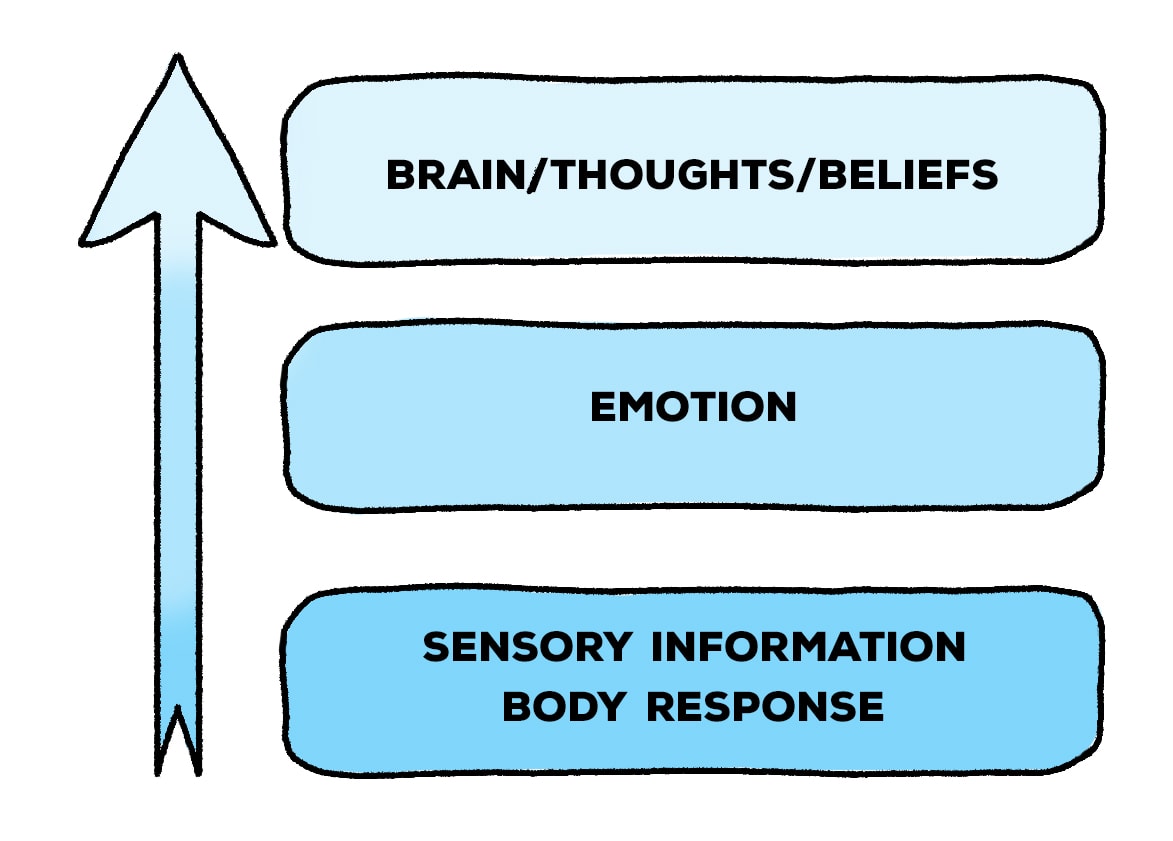Explain the Difference Between Bottom Up and Top Down Processing
Top-down model has high ratio of redundancy as the size of project increases. In bottom up approach we solve smaller problems and integrate it as whole and complete the solution.

Bottom Up Processing Definition 7 Examples Practical Psychology
Therefore the word data-driven can be used when describing perception.

. It became quite obvious how the two processes work in harmony in order to make this world negotiable for a human being. Top-down strategies instruction focuses on activities that construct meaning rather than on mastering bottom-up skills. C Regularities in the environment.
Achieves recognition of an object by breaking it down into its component parts--relies heavily on sensory receptors. Top-down approach decomposes the large task into smaller subtasks whereas bottom-up approach first chooses to solve the different fundamental parts of the task directly then combine those parts into a whole program. Focusus on gestalt depth and constancy principles.
In this approach We focus on breaking up the problem into smaller parts. The former refers to the idea that the brain takes in the information as a whole and breaks it down to the tiniest most minor aspects of itself. You can only extract the features sounds and patterns that are actually present.
Bottom-Up model have high interactivity between various modules. Bottom-up processing starts with the retrieval of sensory information from our outer environment to create perceptions based on the recent input of sensory information. Suppose a football stands in the centre of a persons field.
But on a top-down account people extracted enough information from the sound and meaning of the sentence to believe that they heard the word legislatures even though they really didnt. Explain the difference between bottom-up and top-down processing in your own words. Mainly used by structured programming language such as COBOL Fortran C etc.
Top-down processing is defined as the development of pattern recognition through the use of contextual information. For instance you are presented with a paragraph written with difficult handwriting. Who theorised bottom-up processing and what year.
This contextual information at the top can come from knowledge about the world or the. Bottom-Up model is better suited as it ensures minimum data redundancy and focus is on re-usability. Define top-down processing Involves using psychological fators such as motivation knowledge from past experience and the setting or context to interpret and assign meaning to a visual stimulus.
The textbook discusses four approaches to object perception describe each. On the other hand top-down processing is the interpretation or understanding of incoming information based on initial experiences expectations and. The latter refers to the idea that it all begins with individual elements that are taken in.
On a bottom-up only account this should never have happened. Top-down strategies or processing. Give an example of bottom-up processing.
Top-down processing Instead of relying on understanding individual letters words sentences or sounds the reader listener uses information and knowledge that might come from outside the text. Top down and bottom up processing refer to two different theories regarding how the brain processes information delivered via the senses. It is easier to understand what the writer wants to convey if you read the whole paragraph rather than reading the words in.
Top-down processing is the process of using context or general knowledge to understand what we perceive. A Helmholtzs unconscious inference. These processes are called top-down and bottom-up.
While the top-down approach focuses on breaking down a big problem into smaller and understandable chunks the bottom-up approach first focuses on solving the smaller problems at the fundamental level and then integrating them into a whole and complete solution. Richard Gregory introduced the concept of top-down processing in 1970. A phonics approach to teaching reading supports bottom-up processes.
The interplay between bottom-up and top-down processing had actually caused me to stop at the stop sign. Give an example of top-down processing. In other words it relates to processing sensory information.
Refers to how we interpret sensations due to influences from our available knowledge our experiences and our thoughts. What is the difference between top-down and bottom-up processing. Top-down model has tight coupling issues and low interactivity between various modules.
B Gestalt laws of perceptual organization. TOP DOWN APPROACH. Do not use the words in the text.
Phonics is a method to facilitate students access to text to ultimately lead to comprehension. Top-down processing is the idea that to process and understand a text we start with higher-level features background knowledge context overall meaning and proceed through a series of steps down to lower-level semantic syntactical and phonological features. Refers to the fact that perceptions are built from sensory input.
The visuals of the football and all other information about the sti. Focuses kn perceptual set. -brains analysis and acknowledgement of the raw data.
What is the difference in perspectives of top-down and bottom-up processing experience of pain. When the brain labels a particular stimulus or experience. It seems that the two operate together more often than not which at times makes them difficult to distinguish between.
As opposed to the top-down approach in the bottom-up processing approach the perception starts at the sensory input the stimulus. We use top-down processing to quickly understand the sensory input we take in when we interact with different environments. How might bottom-up and top-down processing be involved in our perception of a illusory contours and b ambiguous figures.
This problem has been solved.

Bottom Up Vs Top Down Processing Explained In 2 Min Youtube
/bottom-up-processing-and-perception-4584296color2-5c5d076ac9e77c000159c326.png)
How Bottom Up Processing Works


No comments for "Explain the Difference Between Bottom Up and Top Down Processing"
Post a Comment